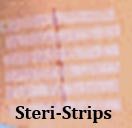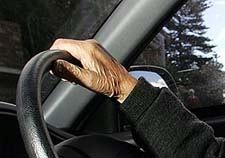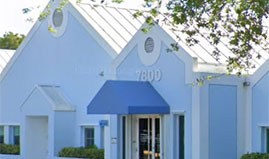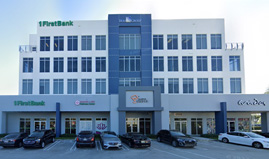Meniscus Tears

One of the most common causes of knee pain seen by orthopedic surgeons is for meniscus tears. Two wedge-shaped pieces of cartilage act as "shock absorbers" between your thighbone and shinbone, called meniscus. They are tough and rubbery to help cushion the joint and keep it stable. There are many causes of meniscus tears including falls and twisting injuries or in combination with other ligament injuries. Some patients may also develop tears as they age – many of which are not symptomatic. Some tears may heal on their own while others may require surgical fixation. Your orthopedic surgeon can advise you further as to which is the correct treatment option for you.
Patients generally present with knee pain. The pain can be a sharp or dull pain in nature and may be associated with certain knee positions. Some patients report pain or a “giving way” sensation with bending, twisting, or simply with walking activity. In cases where the meniscus tear fragment has turned completely over on itself (i.e. bucket handle tear), the knee may become locked and difficult to bend or straighten.
The diagnosis is made with a careful clinical examination by your orthopedic surgeon. Radiographs (or x-rays) are helpful in ruling out other possible causes of knee pain such as fracture or arthritis. Diagnostic studies such as an MRI scan or an ultrasound scan can pick up meniscus tears.
Treatment of meniscus tears depends on multiple factors. The meniscus has a unique blood flow that is limited to the outer edge of the meniscus at the meniscus-capsule edge. Tears that are located in this outer edge, otherwise referred to as the “red-red” zone have a higher chance or healing due to the blood vessel supply. Tears in the middle, or “red-white” zone and the inner edge, or the ‘white-white” zone have respectively lesser chances or healing. There are several types of meniscus tear morphologies including: simple, complex, degenerative, radial, flap, bucket-handle, vertical, horizontal, and tri-zonal. Meniscus tears are also described by their location such as anterior, posterior, body, horn, and root. Other injuries that must be treated at the time of surgery are also important such as ACL tears and articular cartilage lesions. Furthermore, tears are classified by how long ago the injury occurred as acute, subacute or chronic. Lastly, the age of the patients is an important consideration as younger patients have better success rates with meniscus repairs.
The two main surgical treatments for a meniscus tear is to either repair the tear with sutures or to partly resect the tear. Whether to repair or partly resect the meniscus depends on all of the variables above. Your orthopedic surgeon can best advise you as to the appropriate treatment strategy. Meniscus surgery can be performed as an outpatient procedure with an arthroscope, or minimally invasive camera procedure. The success rate for meniscus repairs depends largely on those factors mentioned above. The recurrence rate for meniscus tear repairs is variable (10-70%). The return to full recovery is multi-factorial and depends on size, location, chronicity, tear type and patient age as well as the surgical technique. Diligent physical therapy is paramount for a successful outcome.
Knee Meniscus Tear Brochure
Common Questions Regarding Meniscus Tears and Knee Arthroscopic Surgery.
What Are Some of the Causes of a Knee Meniscus Tear?
- Falls, twisting injuries, or direct contusions injuries.
- Tears can happen with time and repetitive use.
What Age Group is Commonly Affected with a Knee Meniscus Tear?

- Meniscus tears can happen at any age.
- Adolescents, athletes tend to have flap tears, and bucket handle tears.
- Athletes and adolescents may tear the meniscus along with anterior cruciate ligament or collateral ligament injuries.
- Middle-aged and elderly tend to have degenerative tears.
What Are the Symptoms of a Knee Meniscus Tear?
- The knee may “buckle”, “give-out” or “lock”.
- Pain can happen with walking, running, stairs, twisting motion, and knee bending activities.
- The knee may become locked and difficult to bend or extend. This may require urgent treatment including surgery.
What Types of Meniscus Tears Are There?
- Simple, radial, degenerative, flap, bucket-handle, horizontal, vertical, trizonal.

How Are Meniscus Tears Diagnosed?
- By careful examination of the knee.
- By MRI scan or by arthroscopic surgery.
How Are Meniscus Tears Treated Without Surgery?
- By careful examination of the knee.
- By MRI scan or by arthroscopic surgery.
How Are Meniscus Tears Treated Without Surgery?
- Physical therapy.
- Activity modification.
- Anti-inflammatories (Motrin, Aleve) or Tylenol.
What Happens If Meniscus Tears Are Not Repaired?
- Some tears may heal with time.
- Some may become larger.
- The location and size of the tear influence the healing potential.
- Tears that have been present for several months (chronic) may also have low healing potential.
- Tears that do not heal may lead to joint arthritis.
If I Have a Meniscus Tear, What Can Happen if I Wait?
- Pain may potentially eventually improve.
- Pain may potentially worsen.
- Tears may become larger with time.
- Tears may not be repairable if too much time has elapsed.
- The knee can form arthritis due to the lack of adequate cartilage protection from a torn meniscus.
When and Why Should I Have Surgery?
- If you continue to have pain despite therapy and medications.
- Younger patients with potential for a suture repair of the tear.
- Smaller tears have better outcomes than larger tears. Tears may enlarge over time if not treated.
Is There an Age Restriction for Surgery?
- Age itself is not the limiting factor.
- A careful pre-operative assessment with your medical internist can determine if you are a candidate for surgery.
Is the Surgery Minimally Invasive?
- The surgery is performed with a minimally invasive arthroscopic technique.
- Often, the procedure is performed completely with two small arthroscopic ¼ inch incisions on front of knee.
- Occasionally, if the tear is suture-repaired, additional incisions may be required.
How is The Meniscus Tear Treated Surgically?
- Meniscectomy - The normal meniscus is left intact. The torn fragment may then be excised using arthroscopic instruments.
- Meniscus repair – The meniscus may be repaired using sutures.
- Meniscus transplantion– The meniscus is reconstructed using a cadaver or allograft meniscus that is sewn into the knee joint.

Am I A Candidate for Meniscus Repair Surgery?
- Meniscus repairs are most successful if the tear is a relatively new and small tear with adequate blood supply in younger patients.
- In those patients with an anterior cruciate ligament (ACL) tear and a meniscus tear, repairs of the meniscus are even more successful when performed at the same time as the ACL reconstruction.
- Your doctor will be able to determine if you are a candidate for meniscus repair surgery.
Am I A Candidate for Meniscus Transplantation or Reconstruction Surgery?
- A meniscus may be transplanted into patients who have little or no remaining meniscus in the knee, such as patients who underwent prior complete or subtotal meniscectomy procedures.
- The procedure requires the transplantation of allograft tissue into the knee using cadaver tissue.
- Some patients may be candidates for meniscus reconstructions using biologic scaffolds.
- Meniscus transplantations have a good success rate and are generally reserved for patients who do not have significant arthritis of the knee and have stable ligaments and normal knee alignment.
- Your doctor will be able to determine if you are a candidate for meniscus repair surgery.
- Hommen performs meniscus transplantation procedures.
- Hommen’s literature publication of meniscus transplantation surgery. Hommen JP el al. Meniscus allograft transplantation: ten-year results of cryopreserved allografts.
What Is Arthroscopic Surgery?
- A camera is inserted into the knee and viewed via a video monitor.
- The meniscus and other knee problems can be addressed.
What are the Benefits of Arthroscopic Surgery?

- A less invasive procedure with the benefits of:
- less surgical dissection
- less surgical pain
- faster recovery rates
- better visualization of the knee anatomy
What Type of Anesthesia Will I Have?
- Arthroscopies are performed under regional or general anesthesia.
- Regional anesthesia includes spinal anesthesia, where the legs are numb only. Nerve blocks can also be used on certain patient for the procedure.
- General anesthesia is when the patient is completely asleep.
- A nerve block may also be performed for pain relief.
- Our dedicated team of anesthesiologists will be able to advise you as to which type anesthesia is best for your procedure.
- Do NOT make any important decisions after surgery since sedatives and other medications are given during the case.
What Can I Expect the Night Before Surgery?
- You may take your regularly scheduled medications.
- Certain medications must be stopped before surgery (such as blood thinners). A complete list will be given to you by our office staff.
- Do not eat or drink after midnight before your surgery.
- On the night before the surgery you will called by the hospital surgical team. They will discuss:
- When to arrive for your surgery
- When you can eat
- They will also answer questions you may have concerning medication, transportation, and other concerns.
Is My Surgery Outpatient Same Day Surgery?
- The majority of arthroscopic cases are outpatient procedures and patients are allowed to go home the same day of their procedure.
- In certain cases, patients may stay overnight for observation at the hospital and will be allowed to go home in the morning after surgery.
What Happens If I Have an Anesthesia Nerve Block?
- Patients who have a nerve block, will have prolonged anesthesia to the thigh and knee and may go home with the leg still “numb”.
- Therefore, be careful to avoid any pressure, prolonged ice exposure, or injury to the leg as you will not feel the pain until the block has worn off.
Can I Drive Home After Surgery?
- You should arrange transportation with family, friends, or other means for after surgery.
- You will not be allowed to drive home after the procedure.
What Kind of Pain Can I Expect Following Surgery?
- As with any surgery, there will be surgical pain. The benefit of arthroscopic surgery is the limited amount of surgical dissection and injury to the knee and faster recovery time.
- You will be prescribed narcotic medication to go home with.
- Do NOT make important decisions while taking narcotic medications.
What Should I Avoid After Surgery?
- If your knee is placed in a brace, maintain the brace until you are instructed to remove it.
- You will be informed of your weight bearing status after the case.
- In the case of meniscus repair, you may not place weight on your knee.
- In the case of meniscus resection, you will probably be able to place full weight on the knee if no other cartilage or ligament repair was performed.
- You will be given crutches or other assistive devices for walking in the hospital.
- Do NOT make important decisions immediately after surgery or while on narcotic medications.
When and How Do I Bathe or Shower After Surgery?
- Do not bathe or submerge the knee in a pool until Dr. Hommen has cleared you for such activity.
- You may shower after 72 hours if the incisions are dry.
When Do I Remove the Dressings?

- You may remove the knee dressings after 72 hours.
- Please do NOT remove the white sticky “steri-strips”.
- Towel-dry the incision after showering.
Why Do I Need to Have a Ted-Hose Compression Stocking?
- You may be given a ted-hose stocking after surgery.
- This helps prevent swelling in the foot, ankle and knee after surgery.
- It also helps reduce the risk of blood clots after surgery.
- Wear the stockings at least 2 weeks after surgery, however, 4 weeks is ideal.
Do I Need to Take a Blood Thinner After Surgery?
- The majority of patients do not need a blood thinner after surgery as the risk of medications may out-weigh the risks of blood clots.
- There is less than 1% chance of a pulmonary embolism after knee arthroscopy.
- If you have risk factors for blood clots (previous blood clot, family history of blood clot), then you may require prophylaxis with a blood thinner after surgery.
- Patients may choose to be anti-coagulated after surgery and will be provided medications.
What Pain Medications Do I Take After Surgery?
- You will be prescribed a narcotic for pain relief after surgery.
- You should continue the medications for the first 72 hours as directed and then wean the medications when you are able.
Do I Wear a Knee Brace After Surgery?
- Certain patients will require a knee brace after surgery.
- Immobilization is may be used to protect meniscus repairs.
- Meniscectomies generally do not require bracing.
Do I Receive Rehabilitation After Surgery?
- Therapy begins according to a strict therapy schedule usually
- Physical therapy continues over a 4 to 16-week period depending on what was procedure was performed.
- Patients undergoing meniscectomy are allowed to return to full activities by 6 weeks.
- It will take approximately 4-6 months before returning to full activities after meniscus repair.
- Return to full activity depends on the size of the tear, activity requirements, the size of the resection, the amount of cartilage degenerative changes in the knee, or the repair strength.
- Each patient rehabilitates at their own pace and the above a generalized guideline.
- Each patient has an individually designed rehab program.
Where Can I Do Therapy?
- Therapy is performed with a licensed therapist usually at approved outpatient therapy centers.
- Hommen will tailor a therapy protocol according to your needs that the therapist will follow.
- There are several exercises that patients can do on their own after knee arthroscopy. http://orthoinfo.aaos.org/topic.cfm?topic=A00300&webid=23DFEB5F
When Can I Drive After Knee Arthroscopic Surgery?

- Each patient will respond differently to arthroscopy.
- If the meniscus is repaired with sutures, expect a restricted return to driving until directed by the doctor.
- If the meniscus torn fragment is excised, patient may resume driving when control of normal knee function is restored (usually over the course of a few days to a few weeks).
Links to Knee Arthroscopic Surgery













